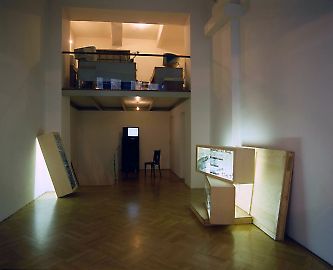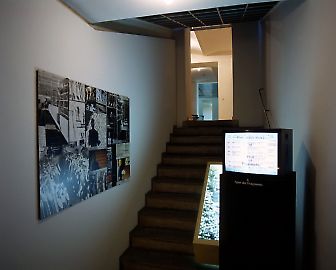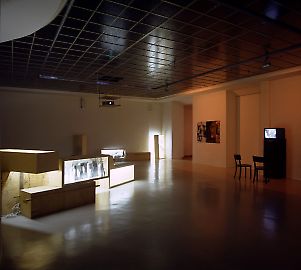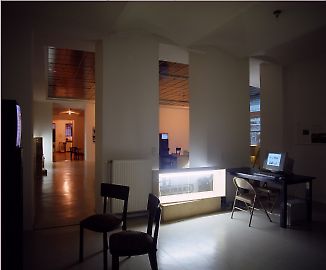Vera Frenkel -- Body Missing
[In 2001], the Austrian media reported a discovery by the Bundesdenkmalamt (Federal Office of Historical Monuments) Vienna: an archive of photographs of 5 600 artworks confiscated during the Nazi period. As a result, Vera Frenkel’s Body Missing, a work, originally made in 1994 for the Offenes Kulturhaus in Linz in 1994 and now expanded, concerned with the Third Reich’s art theft policy, took on a new relevance […]. The six channel video installation Body Missing deal with the Sonderauftrag Linz, or Special Assignment Linz, the planned Führermuseum in Linz and the fate of artworks that could not be located after World War II or which surfaced elsewhere. Sonderauftrag Linz was Hitler’s systematic plan to confiscate artworks for the planned Führermuseum by any means necessary. Artworks were brought from all across Europe to the Altausssee salt mines, where they were stored under ideal conservation conditions until they were discovered by the Allies.
In a semi-fictional framing narrative, Frenkel creates characters that set us on the tracks of Sonderauftrag Linz. The artist as a barkeeper of the Transit Bar#1# overhears by chance conversations among some of her regulars, two women and a man, about art collecting fever, war loot, and the discovery of lists of artworks and depots. From letters, bits of conversation, and interviews, a pattern emerges from the puzzle. Another narrative is based on the encounter with the character of Polly, a famous restorer and copyist from Vienna, as well as with Hannelore, Simone, Robert, and Friedrich, who, after studying the main list of the lost artworks, create reconstructions or rather “embodiments” of cultural memory. […]
As well as her use of fictional narrative, Frenkel’s work explores these issues using archival material, sketches, and documents from the Linz City Archives, and with atmospheric images of art in storage, hidden corridors, and symbolically-charged sites like the Aula, lecture hall, of Vienna’s Academy of Fine Arts. The music, in part composed by the artist herself, underscores this investigative approach to assembling pieces of the puzzle. […]
Frenkel’s work consists of six video stations with subtitles, but the filmic sequences overlap in repetitions and displacements, and they achieve many points of entry into real and virtual space as ways of approaching both current and historical material.
From a palimpsest of memories, rumors, absences, and a “bearing witness in the absence of witness,” Frenkel creates categories of greater visibility, thus constructing a historiographical discourse. In contrast to academic research, which is committed to the concept of truth and reality, artistic creation is privileged in that it makes possible the freedom to engage in historiography beyond facticity, a historiography that is also artistic creation.
(1) Built orignally at documenta IX, Kassel, now fictively situated at the O.K., Linz
Hedwig Saxenhuber, "Vera Frenkel. Body Missing," in: Springerin, 4 (2001/2002), p. 70






